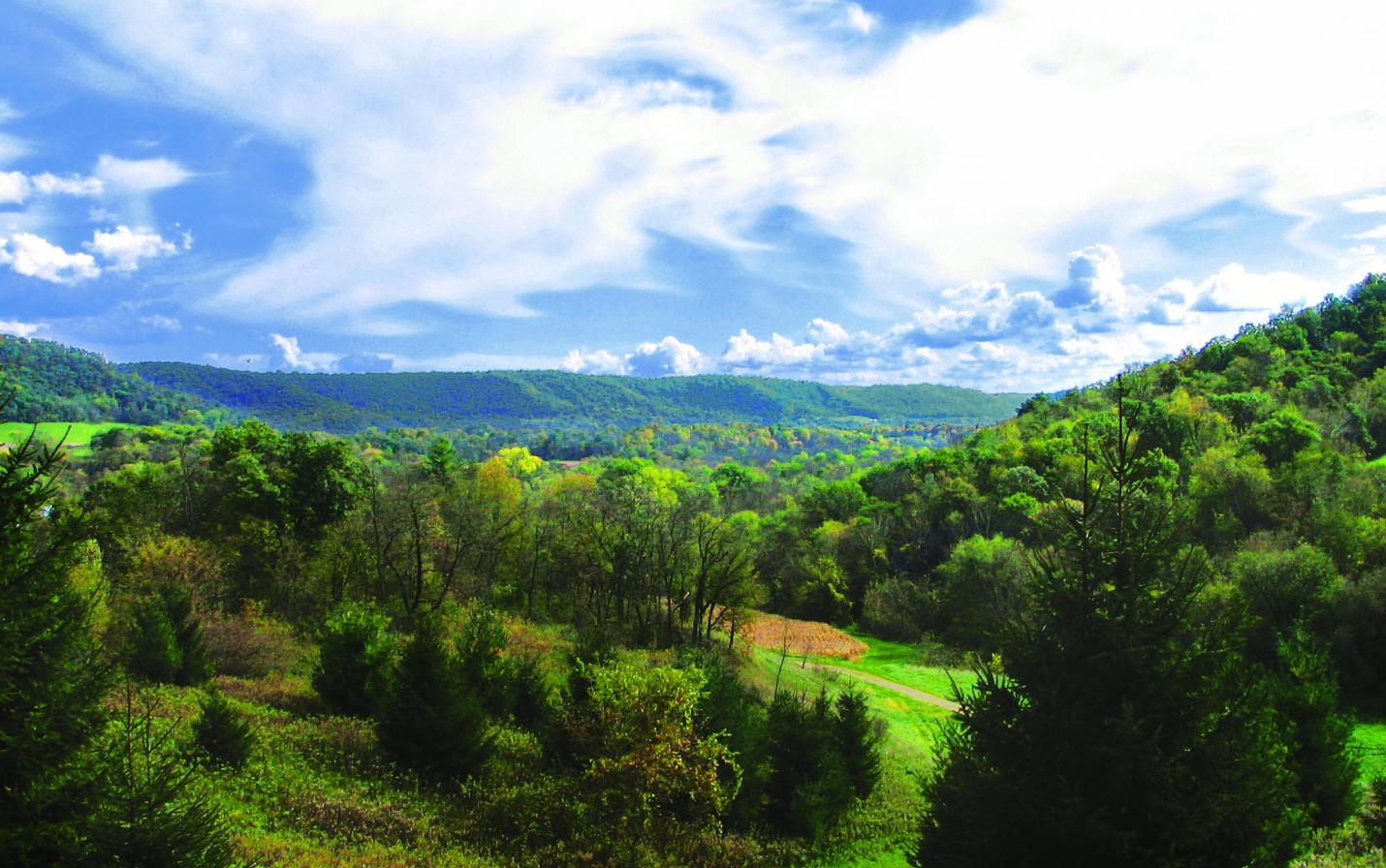
LA CROSSE, WI – April 20, 2020 – With the signing of a recent agreement to permanently protect 88 acres of land in Monroe County, the total acres now conserved by Mississippi Valley Conservancy exceeds 21,000. The land, some private and some public, consists of native habitat, farmland, and scenic landscapes in the Conservancy’s nine-county service territory.
With the most recent easement agreement the Conservancy has now protected a total of 21,056 acres. "Land conservation is one of the key means of ensuring the resilience of the Driftless Area to the threats of climate change. That puts our community organization at the forefront of "Climate Action," the global theme of this year's Earth Day,” said Rob Tyser, the Conservancy board president.
The community-supported land trust, founded in 1997, provides private landowners and communities with land protection services to ensure that properties with key conservation values will continue to provide their ecological benefits in perpetuity. The Conservancy’s primary tool for land protection is the conservation easement – a legal agreement between a land trust and a landowner that is designed to protect the land from the destruction of habitat that is caused by subdivision, mining, and other kinds of development. The intent is to protect the wildlife habitat and ensure the resilience of the Driftless Area to the threats of development and climate change. The easement is permanent and stays with the land even when sold.
“We aimed big,” said Barbara Frank, a founding board member of Mississippi Valley Conservancy, speaking about the formation of the organization, “And we felt confident, for there were many of us in the area with shared values.” Barbara and her husband Don Frank were among the first to permanently protect land with the help of the Conservancy. They donated six acres to what is now the La Crosse Blufflands, Frank tract. Both she and Don have served multiple board terms and continue to volunteer and provide support.
While much of the land protected by the Conservancy is privately owned, there are also more than 5,000 acres of protected land maintained as nature preserves that allow public access for recreation, education, and research. “Today, more than ever, the nature preserves provide an opportunity for people to get outdoors for health and wellness, even while practicing social distancing,” said Carol Abrahamzon, executive director at the Conservancy.
Sugar Creek Bluff, designated as a State Natural Area, was the first land acquired by the Conservancy with funding from the Knowles Nelson Stewardship Program. Towering above the village of Ferryville, the nature preserve offers native wildlife habitats and serves as a cornerstone in the town’s tourism economy. Since the original acquisition, adjacent pieces of land have also been protected by the Conservancy and by the Wisconsin Department of Natural Resources, adding to the natural area for wildlife.
The Conservancy’s land protection would not have grown to its current level without a mix of private land and public projects, according to Gretchen Benjamin, a founding board member who has dedicated her career to protecting the Mississippi River through The Nature Conservancy. “It’s important to have many tools in the toolbox,” she said. “We’re not a huge group but we’ve done huge things.”
Farmlands are also among the natural treasures protected by the Conservancy. Many farmers have done a great deal to protect and enhance their soil, pastures, and woodlands in this area that is prone to flooding and erosion, and they don’t want to see those investments lost to development. “Each easement is customized to meet the expectations of both the landowner and the land trust,” said MVC conservation director Abbie Church, “For example the easement might limit the property to only one farmstead or residence, while allowing for future grazing, crop production, timber harvest, and other uses.”
“When landowners give such care to the land and then go the extra mile to protect it for the future, they are making a generous gift to the broader community for the benefit of us all,” said Carol Abrahamzon. Everyone wins when the land is allowed to go on protecting wildlife as it has for thousands of years, she said.
Photo courtesy of Robert Hurt Landscape Photography. All rights reserved.